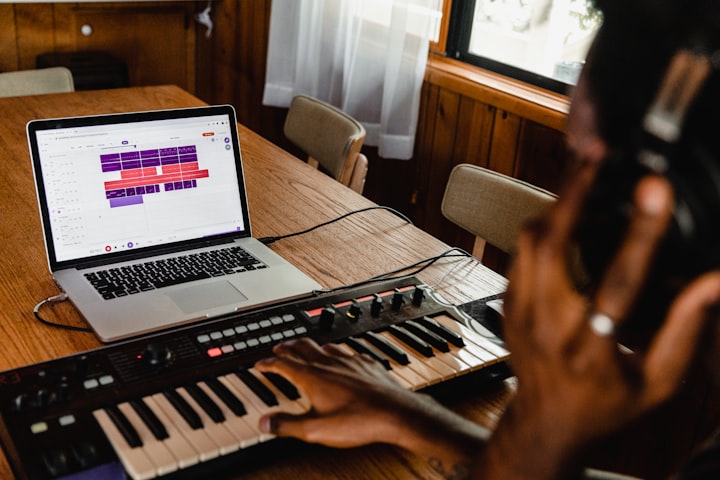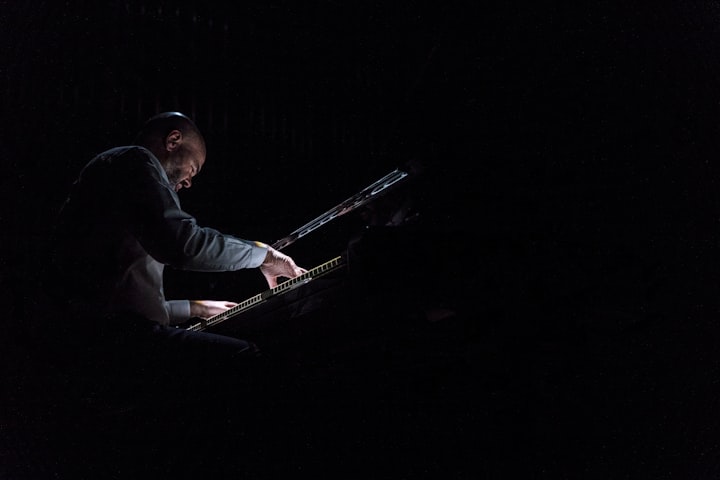How To Teach Yourself The Piano: A Step-by-Step Guide
Learning to play the piano can be a rewarding journey. This step-by-step guide will walk you through the process, from the very basics to more advanced techniques. Remember, learning an instrument takes time and patience, so don't rush through these steps. Enjoy the process!

In an age where digital learning platforms have revolutionized education, the dream of learning the piano without a traditional instructor is more achievable than ever.
From the comfort of your living room to the convenience of your smartphone, the tools to become a self-taught pianist are at your fingertips. But how does one navigate this journey from novice to virtuoso without the guidance of a weekly lesson?
The Rising Tide of Self-Taught Musicians
The pandemic years saw a surge in hobby adoptions, with music-making at the forefront.
Piano sales skyrocketed, and online learning platforms reported unprecedented growth. This phenomenon wasn't just a temporary distraction; it marked a shift in how we approach skill acquisition.

"We've seen a 300% increase in new users since March 2020," says Sarah Chen, CEO of an online piano learning class. "People are realizing that they don't need to commit to expensive, time-consuming lessons to enjoy playing an instrument."
This trend towards self-directed learning isn't unique to music. From coding bootcamps to language apps, the ethos of "teach yourself" has permeated every corner of education.
But can this approach really work for an instrument as complex as the piano?
The Myth of the "Natural" Musician
For decades, the ability to play an instrument was often attributed to innate talent. However, recent research in the field of cognitive psychology suggests otherwise.
Dr. Anders Ericsson, a pioneer in the study of expert performance, argues that deliberate practice, not innate talent, is the key to mastery. "The idea that expert performance reflects basic abilities that cannot be changed by training is not scientifically defensible," Ericsson wrote in his seminal work, "Peak: Secrets from the New Science of Expertise."
This paradigm shift has empowered countless aspiring musicians to take their education into their own hands. But where does one start?
Building a Foundation: The Basics of Piano
Before diving into complex pieces or improvisation, it's crucial to establish a solid foundation. This includes understanding basic music theory, proper posture, and finger positioning.
- Music Theory 101: Learn to read sheet music, understand time signatures, and recognize key signatures. Websites like Musictheory.net offer free, interactive lessons.
- Posture and Technique: Develop proper sitting posture and hand positioning. YouTube channels like "Piano TV" offer excellent visual guides.
- Finger Exercises: Start with simple exercises to build dexterity. The Hanon exercises, available for free online, have been a staple of piano education for over a century.
Leveraging Technology: Apps and Online Courses
The digital age has ushered in a wealth of resources for aspiring pianists. From smartphone apps to comprehensive online courses, technology has made piano education more accessible than ever.
One standout option in the world of online piano courses is Pianoforall. This innovative program has garnered attention for its unique approach to teaching piano, blending traditional methods with modern learning techniques.
Pianoforall starts students off with popular rhythm style piano, teaching them to play recognizable songs quickly. This immediate gratification helps maintain motivation, a crucial factor in self-directed learning. The course then gradually introduces classical techniques and music reading skills, building a well-rounded skill set.
"What sets Pianoforall apart is its emphasis on practical skills," notes Dr. Elena R., a music education researcher at Berklee College of Music. "By teaching students to play recognizable tunes early on, it taps into the intrinsic motivation that's so crucial for sustained learning."
The course includes over 300 video lessons and 10 interactive e-books, providing a structured yet flexible learning path. Users can progress at their own pace, revisiting challenging concepts as needed.

While Pianoforall offers a comprehensive approach, it's not the only option in the digital learning space. Other popular platforms include:
- Flowkey: Known for its real-time feedback feature
- Simply Piano: Offers a gamified learning experience
- Playground Sessions: Co-created by music legend Quincy Jones
Each of these platforms has its strengths, and many self-taught pianists find value in combining resources to create a personalized curriculum.
The Power of Deliberate Practice
Regardless of the chosen learning method, consistent, focused practice is key to progress. But how does one practice effectively without the guidance of a teacher?
- Set Clear Goals: Instead of vague intentions like "get better at piano," set specific, achievable goals. For example, "Master the G major scale by the end of the week."
- Use a Metronome: This simple tool is crucial for developing a strong sense of rhythm and timing.
- Record Yourself: Regular recording sessions allow you to track progress and identify areas for improvement.
- Practice Slowly: It's tempting to play at full speed, but slowing down allows for more precise movements and better muscle memory formation.
- Focus on Troublesome Passages: Rather than playing a piece from start to finish repeatedly, isolate challenging sections for focused practice.
Overcoming Common Challenges
The path of the self-taught pianist is not without its obstacles. Common challenges include:
- Plateau Periods: Progress may seem to stall after initial improvements. This is normal and can be overcome by varying practice routines and setting new challenges.
- Motivation Dips: Without the accountability of a teacher, motivation can wane. Setting performance goals, like playing for friends or recording a video for social media, can help maintain enthusiasm.
- Technical Mistakes: Without expert guidance, it's easy to develop bad habits. Regular video recording and comparison with professional tutorials can help identify and correct these issues.
- Repertoire Selection: Choosing appropriate pieces for one's skill level can be challenging. Online communities and forums can provide valuable guidance in this area.
The Role of Community in Self-Directed Learning
While the term "self-taught" might imply solitude, successful autodidacts often rely on a community of fellow learners. Online forums, local meetups, and social media groups can provide support, motivation, and valuable feedback.
"The self-taught community has been invaluable," says Michael Chang, a software engineer who started learning piano during the pandemic. "Sharing progress videos on Instagram and getting feedback from other learners has kept me accountable and inspired."
Step-by-Step Guide to Learning the Piano
This step-by-step guide will walk you through the process, from the very basics to more advanced techniques.
Learning an instrument takes time and patience, so don't rush through these steps. Enjoy the process!
Step 1: Familiarize Yourself with the Instrument
- Understand the layout of the keys:
- There are 88 keys on a full-sized piano.
- The pattern repeats every 12 keys (7 white, 5 black).
- White keys represent natural notes (A, B, C, D, E, F, G).
- Black keys represent sharps and flats.
- Learn proper posture:
- Sit at the middle of the keyboard.
- Keep your back straight and shoulders relaxed.
- Feet flat on the floor or on a footrest.
- Elbows should be level with the keys.
- Practice proper hand positioning:
- Curve your fingers naturally, as if holding a ball.
- Keep your wrists level with your hands, not dropped or raised.
Step 2: Learn Basic Music Theory
- Understand the musical alphabet:
- Learn the names of the notes: A, B, C, D, E, F, G.
- Recognize that the pattern repeats across the keyboard.
- Learn about octaves:
- An octave is the interval between one musical pitch and another with half or double its frequency.
- Understand time signatures:
- Common time signatures: 4/4, 3/4, 2/4.
- Learn what the top and bottom numbers represent.
- Learn about key signatures:
- Understand major and minor keys.
- Learn how sharps and flats affect the key.
Step 3: Start with Simple Exercises
- Begin with five-finger exercises:
- Practice playing C, D, E, F, G with your right hand.
- Repeat with your left hand.
- Learn scales:
- Start with C Major scale.
- Practice playing it with both hands separately, then together.
- Practice chord progressions:
- Learn basic chords: C, F, and G.
- Practice transitioning between these chords.
Step 4: Learn to Read Sheet Music
- Understand the staff:
- Learn about the treble and bass clefs.
- Memorize the notes on each line and space.
- Learn about note values:
- Whole notes, half notes, quarter notes, eighth notes, etc.
- Understand how these relate to rhythm.
- Practice sight-reading:
- Start with very simple pieces.
- Gradually increase difficulty as you improve.
Step 5: Develop Your Rhythm
- Use a metronome:
- Start with a slow tempo and gradually increase.
- Practice keeping time with simple exercises.
- Learn about different rhythms:
- Practice common rhythms like waltz (3/4) and march (4/4).
- Clap rhythms:
- Before playing a new piece, try clapping the rhythm.
Step 6: Learn Your First Songs
- Start with simple melodies:
- "Twinkle Twinkle Little Star" or "Happy Birthday" are good options.
- Practice hands separately:
- Learn the right hand part first, then the left hand.
- Once comfortable, try putting them together.
- Gradually increase difficulty:
- Move on to slightly more complex pieces as you improve.
Step 7: Explore Different Genres
- Try classical pieces:
- Start with simple works by composers like Bach or Mozart.
- Explore popular music:
- Learn simplified versions of your favorite songs.
- Try jazz or blues:
- Learn basic blues scales and chord progressions.
Step 8: Develop Technical Skills
- Practice arpeggios:
- Start with simple arpeggios and gradually increase speed and complexity.
- Learn about dynamics:
- Practice playing softly (piano) and loudly (forte).
- Learn to transition smoothly between different volumes.
- Work on your finger independence:
- Practice exercises that require different fingers to move independently.
Step 9: Implement Regular Practice Routines
- Set a practice schedule:
- Aim for consistent daily practice, even if it's just 15-30 minutes.
- Structure your practice sessions:
- Warm up with scales and exercises.
- Work on a specific piece or technique.
- End with something enjoyable to maintain motivation.
- Use practice techniques:
- Slow practice: Play difficult sections slowly and gradually increase speed.
- Hands separate: Practice each hand's part separately before combining.
- Chunking: Break pieces into small, manageable sections to practice.
Step 10: Record and Evaluate Your Progress
- Make recordings of your playing:
- Record yourself regularly to track improvement.
- Listen critically to your recordings:
- Identify areas that need work.
- Celebrate your improvements.
- Set new goals based on your progress:
- Continually challenge yourself with new pieces or techniques.
Step 11: Consider Additional Resources
- Use online tutorials:
- Platforms like Pianoforall offer comprehensive, self-paced lessons.
- Join online communities:
- Participate in forums or social media groups for pianists.
- Consider occasional professional lessons:
- Even as a self-taught pianist, a few lessons with a professional can help correct any bad habits and provide personalized advice.
Remember, learning the piano is a journey, not a destination. Enjoy the process, be patient with yourself, and celebrate your progress along the way.
Happy playing!
The Future of Piano Education
As technology continues to evolve, so too will the landscape of music education. Virtual reality piano lessons, AI-powered feedback systems, and more sophisticated learning algorithms are on the horizon.
However, Dr. Rodriguez cautions against viewing technology as a panacea. "While these tools are incredibly powerful, they can't replace the emotional connection and creativity that comes from making music. The goal should always be to use technology as a means to express oneself through the instrument."
Conclusion: A Journey of Self-Discovery
Learning to play the piano is more than just acquiring a new skill; it's a journey of self-discovery. Whether you choose a structured online course like Pianoforall, piece together your own curriculum from various resources, or combine self-study with occasional professional lessons, the key is to remain curious, persistent, and patient.
As you embark on this musical adventure, remember the words of the great jazz pianist, Thelonious Monk: "The piano ain't got no wrong notes." So sit down at those keys, start exploring, and let your self-taught journey begin.




Comments ()